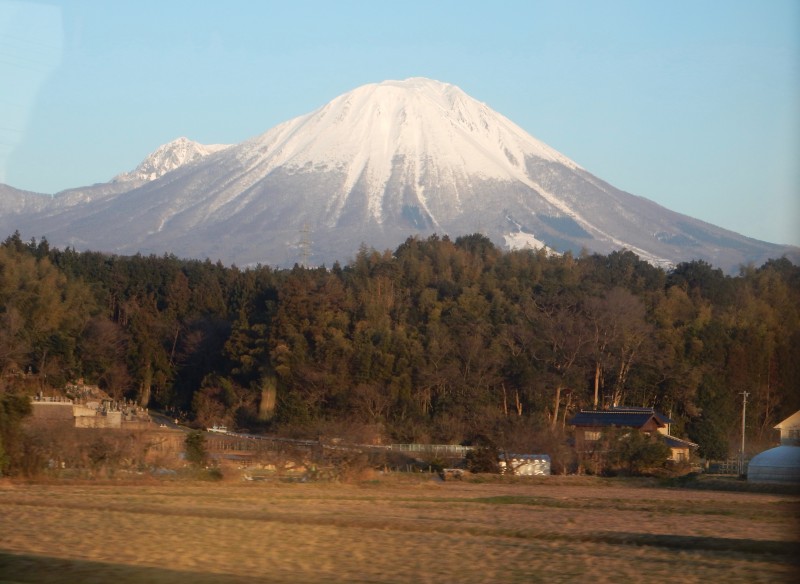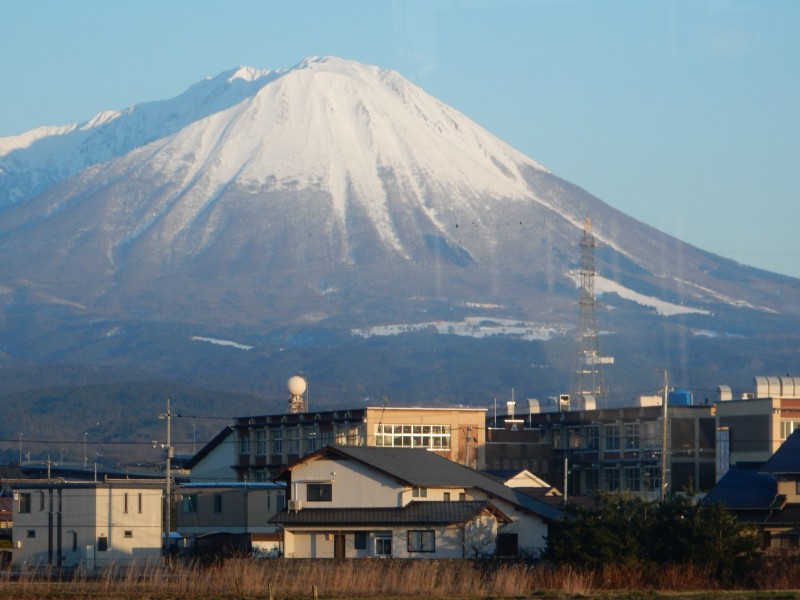
A stupendous ghost!
Looking eastward from the great bridge over those sharply beautiful mountains, green and blue, which tooth the horizon, I see a glorious spectre towering to the sky. Its base is effaced by far mists: out of the air the things would seem to have shaped itself, – a phantom cone, diaphonously gray below, vaporously white above, with a dream of perpetual snow, – the mighty mountain of Daisen.
At the first approach of winter it will in one night become all blanched from foot to crest; and then its snowy pyramid so much resembles that Sacred Mountain, often compared by poets to a white inverted fan, half opened, hanging in the sky, that it is called Izumo-Fuji, ‘the Fuji of Izumo’. But it is really in Hoki, not in Izumo, though it cannot be seen from any part of Hoki to such advantage as from here. It is the one sublime spectacle of this charming land; but it is visible only when the air is very pure. Many are the marvelous legends related concerning it, and somewhere upon its mysterious summit the Tengu are believed to dwell.

Hearn’s description of Mt Daisen, though short, is interesting in a number of ways. First of all, it comes from the remarkable Glimpses of Unfamiliar Japan (1894), inspired by his love-affair with Matsue during his honeymoon period in the country. It’s interesting to note that while he spent less than a year in Matsue, compelled to move by the bitter cold winters, it led to two thick volumes of excitable prose about the place, the people and their customs.
One of the places that caught Hearn’s admiration was the ‘Izumo Fuji’, Mt Daisen. As always, Hearn’s sensuous language gives the mountain a seductive appeal, with its diaphonous, vaporous, marvelous and mysterious appearance. But what marks Hearn’s description in particular are the references to ‘ghost’ and ‘spectre’. These are hardly the usual words associated with mountains.
Hearn’s friend, Basil Hall Chamberlain, claimed that no one could understand Hearn who did not take into account his reference to ghosts. He’s known of course as the author of the eerie stories in Kwaidan, but for the author the word ‘ghost’ had a far wider meaning than just the frightening apparition of a spirit. It was rather a reminder, or a remains, of the past. In other words, it was something which spoke to us of other worlds and another time.
In Hearn’s animist universe, the mountain was tantamount to a living thing, made of the same elemental material as ourselves in that we are all constituted of cells that comprise the universe. The sacred mountains of Japan, like Mt Fuji, are inhabited by kami and act as a conduit between this world and the heavenly one towards which they rise. For Hearn, this gave them a ghostly essence, in that they were so much more than mere physical matter. They were part of a divine paradise in which the ‘charming’ people of the ‘sublime’ Izumo area enjoyed a blessed existence. A stupendous ghost, indeed, even despite the kind of ugly modern encroachment pictured below that Hearn so loathed and opposed.

Picture taken from the Matsue to Okayama train in late February

Leave a Reply